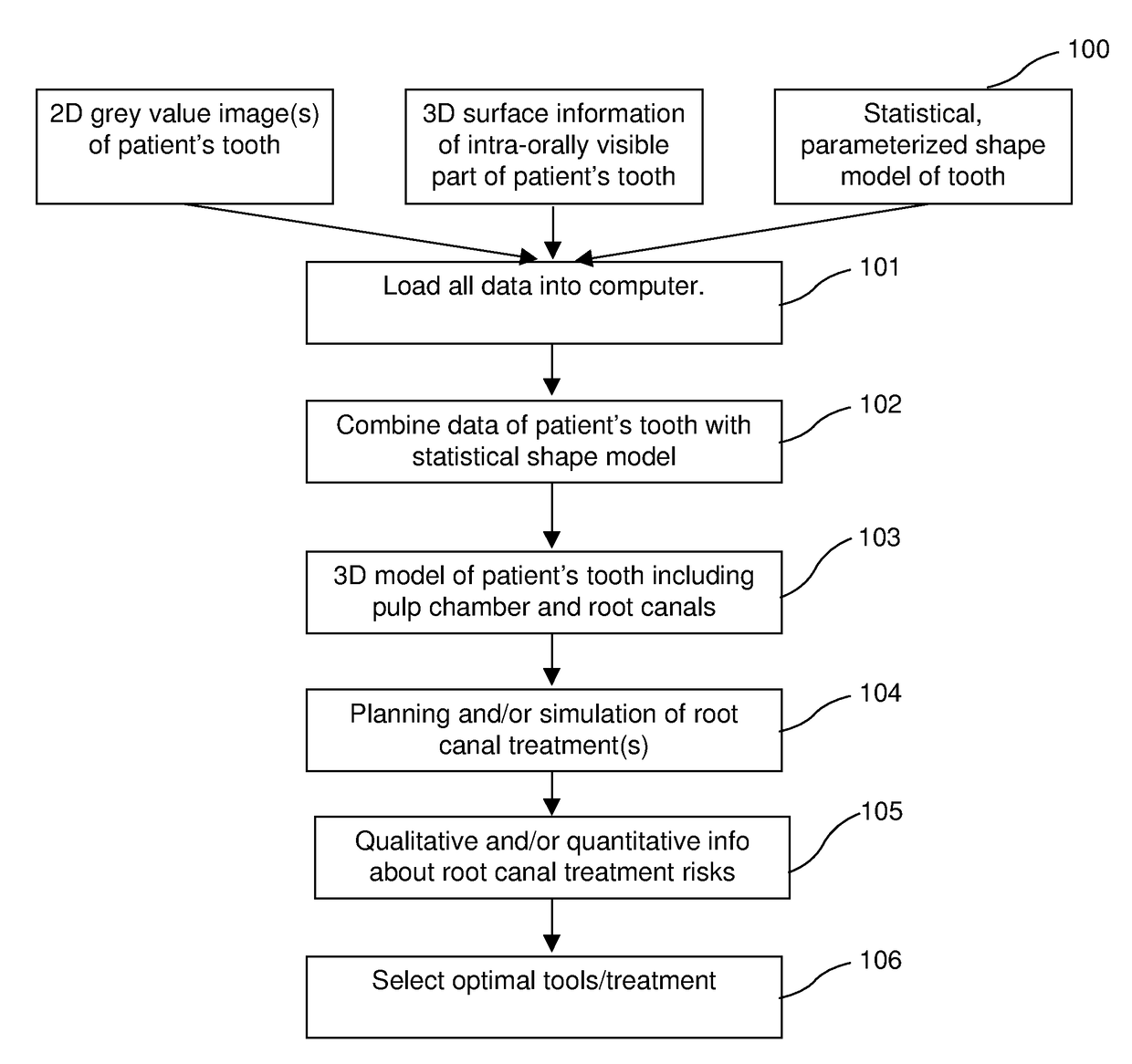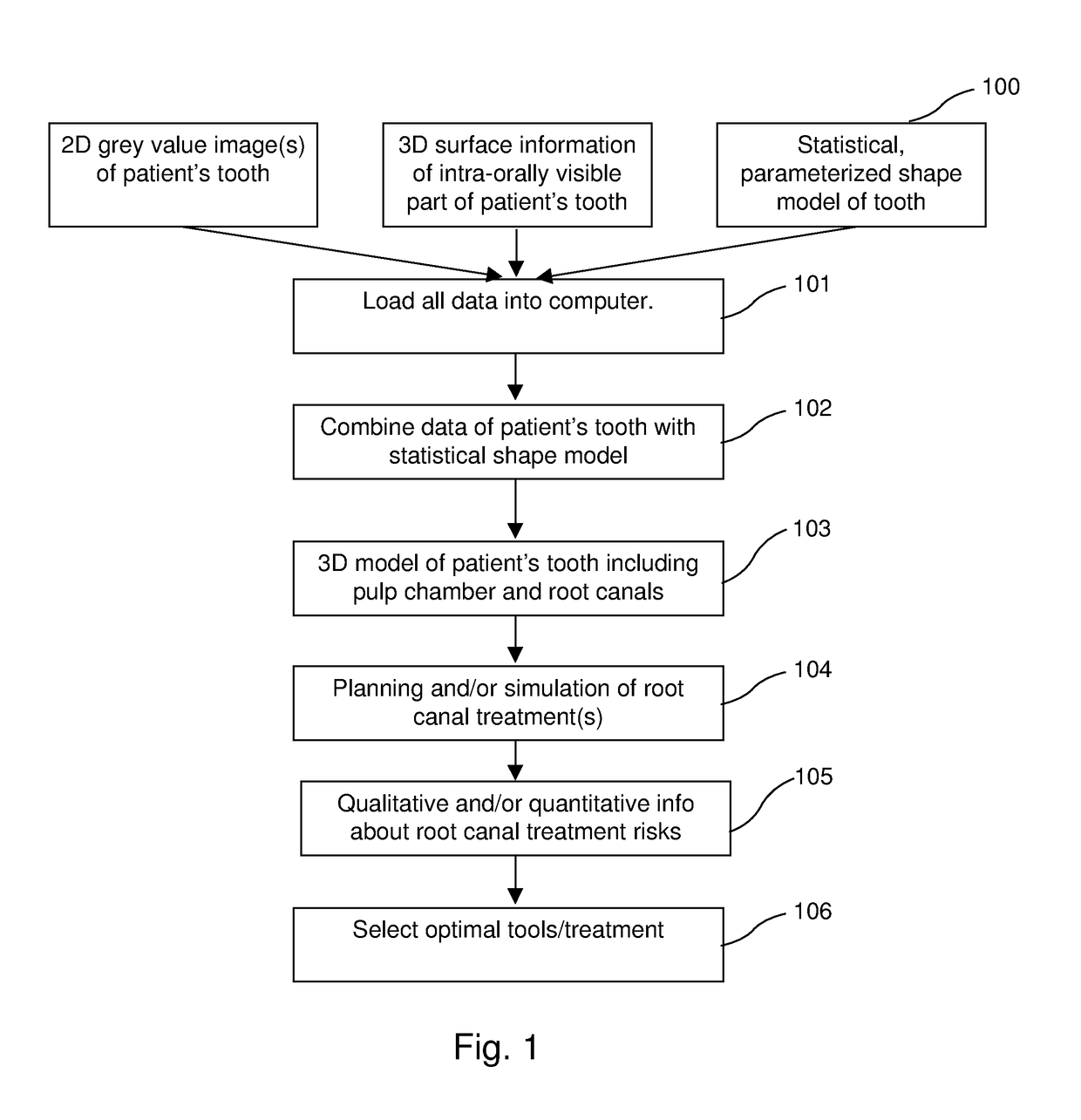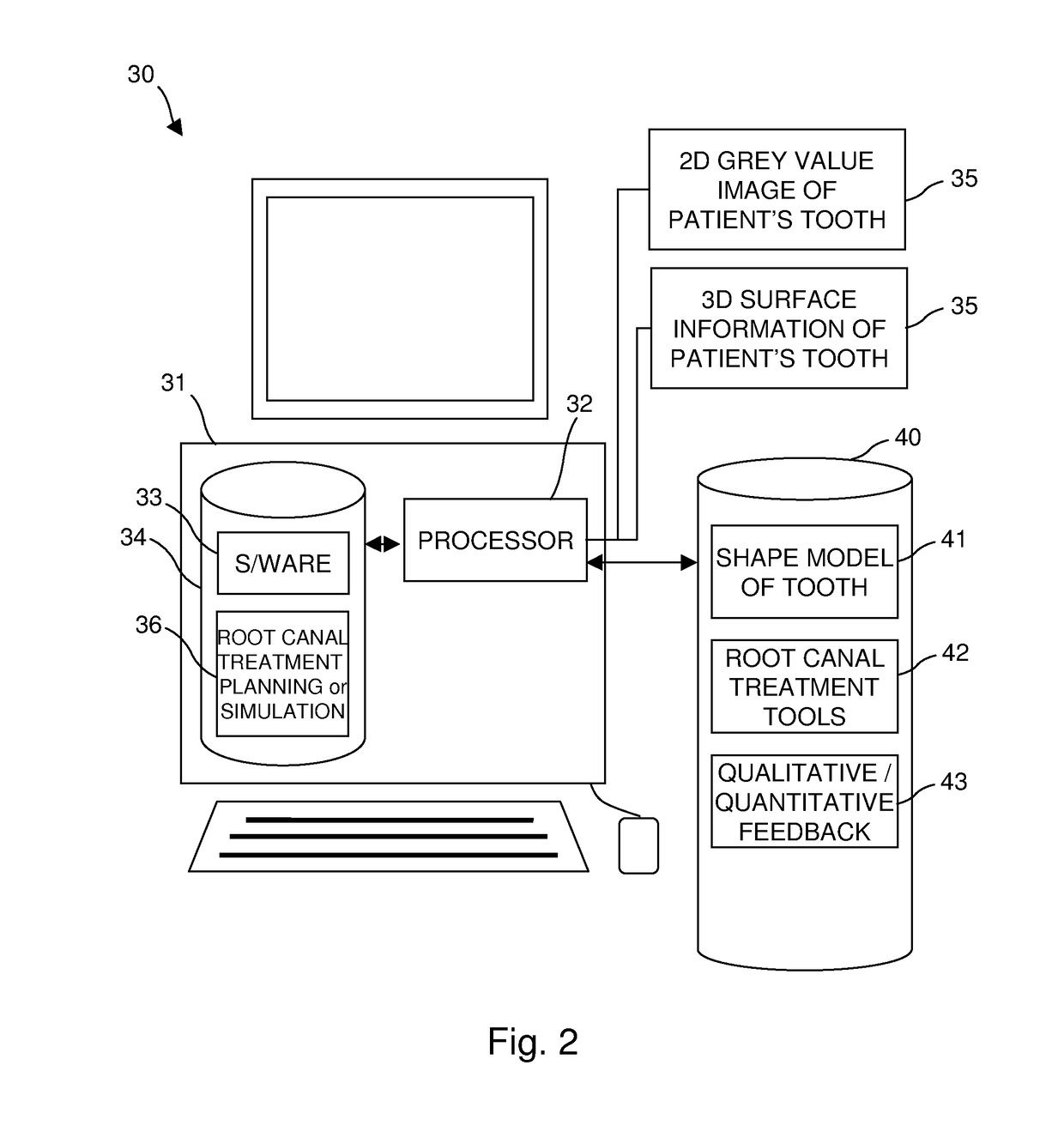Method and system for 3D root canal treatment planning
a root canal treatment and 3d technology, applied in the field of 3d root canal treatment planning, can solve the problems of insufficient cleaning, inability to provide a method that is usable in the daily clinical practice of the patient, and insufficient cleaning of the available prior ar
- Summary
- Abstract
- Description
- Claims
- Application Information
AI Technical Summary
Benefits of technology
Problems solved by technology
Method used
Image
Examples
Embodiment Construction
[0019]The present invention will be described with respect to particular embodiments and with reference to certain drawings but the invention is not limited thereto but only by the claims.
[0020]According to a preferred embodiment of the invention a first step according to a method for simulating root canal treatment simulation consists in creating and visualizing a three-dimensional model of a patient's tooth including the pulp chamber and the root canals. Therefore, the system consists at least of a computer including computer programs which can be utilized with the method for visualizing said three-dimensional model.
[0021]With reference to FIGS. 3 to 5, according to one embodiment the 3D model of the tooth with pulp chamber and root canals is generated based on the combination of 3D imaging data of the crown and one or more 2D radiographs of the tooth. Therefore the 3D crown information of the respective tooth is digitized. This can be done using different methods. A first method ...
PUM
 Login to View More
Login to View More Abstract
Description
Claims
Application Information
 Login to View More
Login to View More - R&D
- Intellectual Property
- Life Sciences
- Materials
- Tech Scout
- Unparalleled Data Quality
- Higher Quality Content
- 60% Fewer Hallucinations
Browse by: Latest US Patents, China's latest patents, Technical Efficacy Thesaurus, Application Domain, Technology Topic, Popular Technical Reports.
© 2025 PatSnap. All rights reserved.Legal|Privacy policy|Modern Slavery Act Transparency Statement|Sitemap|About US| Contact US: help@patsnap.com



